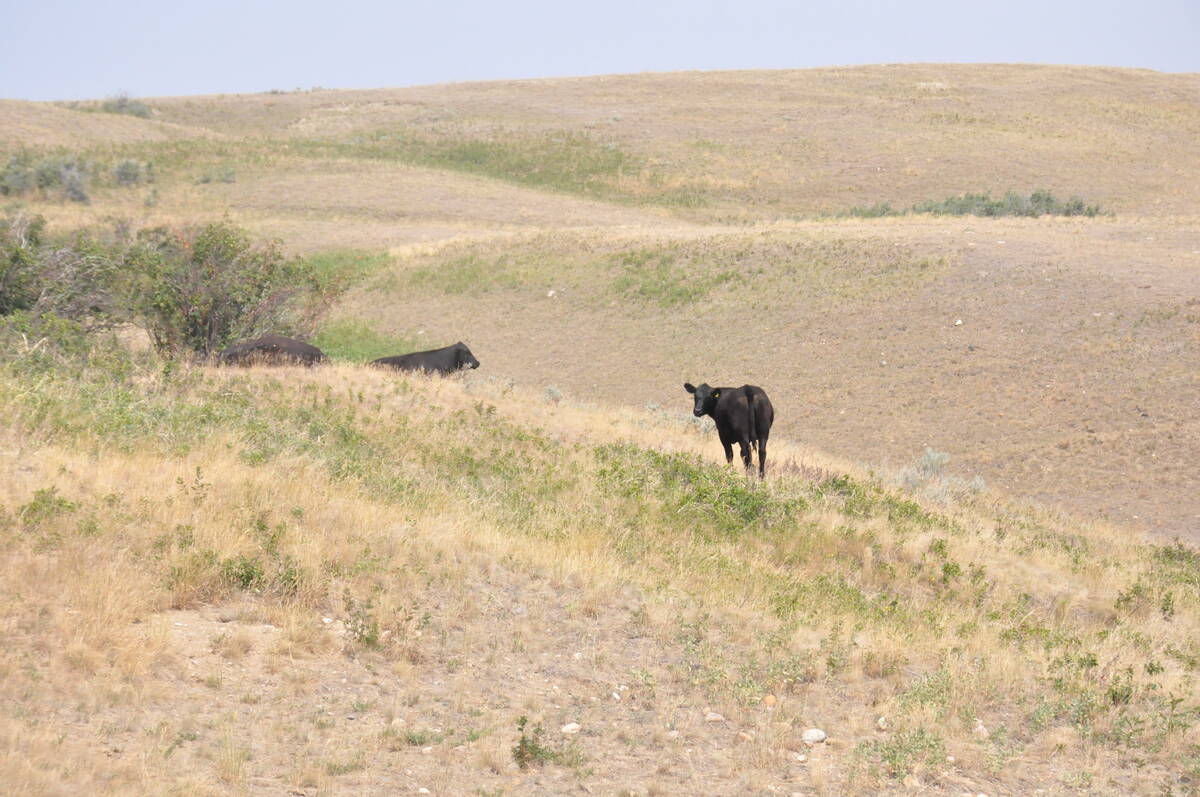Straddling the apex of the western sedimentary basin, Alberta sits on a rich pool of oil and natural gas, including an estimated 500 trillion cubic feet of natural gas locked in coal seams.
Resource companies eager to extract this unconventional natural gas face a conundrum: how to economically remove it while remaining good corporate neighbours to landowners who may not want numerous wells and a spider web of pipelines crisscrossing the surface.
Coalbed methane is natural gas embedded in coal formations. In Canada it is found in the coal beds that lie under British Columbia, Alberta and Saskatchewan. The most accessible reserves are in Alberta, but even those became available just a few years ago when extraction technology improved.
Read Also

Saskatchewan tests new forage insurance program
Saskatchewan Crop Insurance Corp. tested a new forage insurance program this past summer as it looks for ways to better protect cattle producers.
The oldest producing well in Alberta is only three years old. No one knows how much of this gas can be removed or how long the wells might be viable, said Peter Howard of the Canadian Energy Research Institute.
That is why private companies have hired the institute to study the resource even as the industry races ahead of science and the regulators.
“The projections are that it could be quite a significant resource,” Howard said.
“One thing they are discovering is that as time moves on and they are drilling … they are starting to notice an increase in the production rate coming from coalbed seams.”
Energy companies began hunting for coalbed methane when gas prices soared and drilling technology improved, said Mike Dawson, chair of the Canadian Society for Unconventional Gas.
Alberta has three main formations: the dry coal seams of the Horseshoe formation; the Mannville coals where seams are deeper and saline water is present; and the Ardley formations where fresh water is found.
Most companies prefer to work in the Horseshoe formation because it is dry, which is unusual. Coal seams must be fractured to release the gas and if water is present that must be removed first.
“If these coals were producing large amounts of water, I would think that the amount of development that would be occurring would have changed dramatically,” Dawson said.
“As soon as you have to start handling and disposing of water, the economics of any given well are going to change dramatically.”
A backlog of drilling applications for coalbed methane is before the Alberta Energy and Utilities Board.
“Right now because the EUB is chock a block full with applications, there are at least another 100 million (cubic) feet of gas (per day) that could be brought on tomorrow,” said Dawson, who has been in the oil business for 30 years.
Coalbed methane extraction is an expensive, risky proposition.
“You have to spend a lot of money out front and your rewards are spread out over a period of 10 or 15 years,” Dawson said. “You will make money but you need to have fairly deep pockets.”
His figures show the big four players this summer working mostly in the Horseshoe Canyon area are Apache Canada, producing 60 million cubic feet per day, EnCana Corp. at 46 million cubic feet, MGV Energy at 36 million cubic feet and Trident Exploration at 30 million cubic feet.
The United States has been tapping its own coalbed methane resource for about 12 years. A notable case study is the Powder River basin of Wyoming and Montana, where environmental problems set in and landowners complained.
Coal seams in that region are thick with large quantities of saline water. In some cases the water was discharged into streams or onto the surface. The salty water sterilized surrounding soil and damaged local water supplies.
“We’ve been able to learn some things from the history of coalbed methane development in the United States, but we have really had to develop our own sets of parameters and thresholds in order to understand the nature of the beast that lies underneath us here,” Dawson said.
Best practice standards are needed and he is confident that advisory committee proposals before the provincial government could be the first big step for a province where strong regulations already exist.
“One of the things that separates Alberta from say, the Powder River analogue, is that it has a well established set of oil and gas exploration and production guidelines. Development of coalbed methane or any other unconventional resources falls under the same guidelines.”
He said he realizes the public is nervous about this latest activity and understands concerns when people hear a number of wells could be drilled on their property.
However, he argues that it is a safe resource.
“When you look at the extent of development for coalbed methane, it is no different than what we have been doing in shallow gas exploration and development in Alberta for years. The well densities are the same, the wellhead pressures are the same, the level of compression and all of those infrastructure developments are all the same.”















